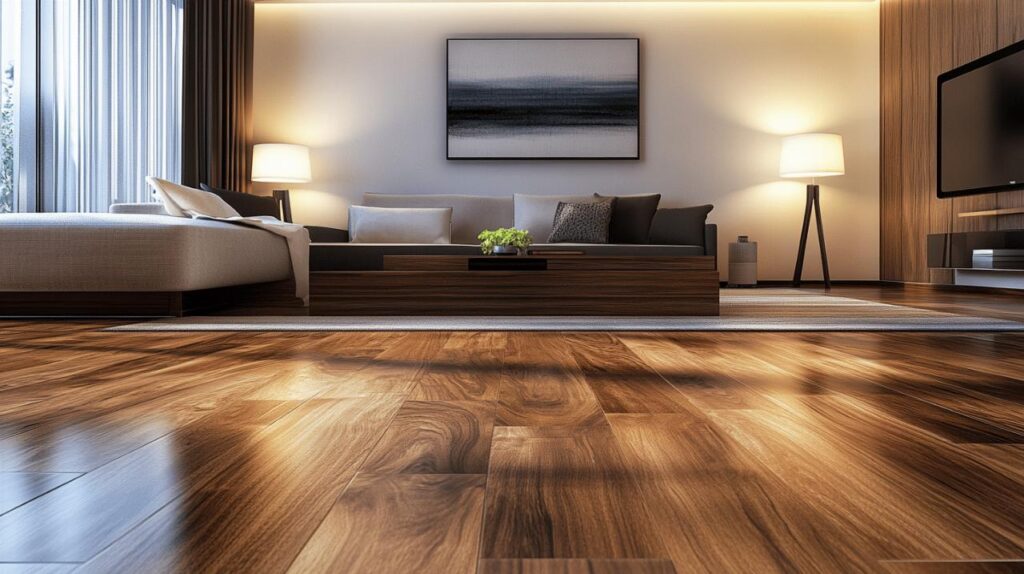In the quest for a more sustainable lifestyle, homeowners are increasingly turning to eco-friendly flooring solutions that not only reduce environmental impact but also create stunning interiors. The growing awareness of climate change has shifted consumer preferences towards responsible choices in home design. Today’s eco-conscious homeowners are seeking beautiful floors with verifiable origins and ethical production methods. Tiendas de Decoracion across the UK are responding to this demand by offering an impressive range of sustainable flooring options that combine environmental responsibility with aesthetic appeal.
Sustainable timber options for elegant interiors
Wood has long been a favorite flooring material, but traditional hardwood harvesting raises serious environmental concerns. Fortunately, several sustainable timber alternatives provide the warmth and beauty of wood without the ecological cost. These options not only preserve natural resources but also bring distinctive character to your living spaces while supporting responsible forestry practices.
Bamboo flooring: rapid regrowth meets durability
Bamboo has emerged as one of the most sustainable flooring materials available today. Unlike conventional hardwood trees that can take decades to mature, bamboo reaches harvesting maturity in just 3-5 years, making it an exceptionally renewable resource. This rapid growth cycle means bamboo cultivation requires minimal energy for harvesting and doesn’t contribute to deforestation. The material itself is naturally pest and moisture resistant, offering remarkable durability for busy households. Easter Flooring Limited, specialists in eco-friendly flooring, highlight bamboo’s ease of maintenance as another significant advantage for modern homeowners looking for practical yet sustainable solutions.
Beyond its environmental credentials, bamboo flooring brings a distinctive aesthetic to interiors with its unique grain patterns and warm tones. The material can be processed in different ways to create various appearances, from traditional vertical or horizontal grain patterns to strand-woven varieties that offer exceptional hardness and stability. This versatility allows bamboo to complement virtually any interior design scheme while providing peace of mind about its environmental impact.
Reclaimed wood: character and conservation combined
Reclaimed wood flooring represents the perfect marriage of conservation and character-rich design. By repurposing timber from old buildings, barns, factories, and other structures, reclaimed wood diverts valuable materials from landfills while reducing demand for fresh logging. These salvaged planks often come from old-growth forests that contained trees harvested decades or even centuries ago, making them more dimensionally stable and durable than newly milled timber. The natural aging process gives each board distinctive markings, nail holes, and colour variations that create floors with unmatched character and history.
The installation of reclaimed wood flooring requires expertise to address the variations in board dimensions and conditions. Companies like Kent Flooring offer professional installation services to ensure these unique materials achieve their full potential in your home. While the initial investment may be higher than some other flooring options, the exceptional durability and timeless appeal of reclaimed wood make it a cost-effective choice over the long term. Many homeowners find that the stories embedded in these historic planks add an emotional connection to their living spaces that factory-produced materials simply cannot match.
Natural and renewable alternatives for modern homes
Beyond timber options, several other natural materials offer outstanding environmental benefits while creating distinctive and comfortable floors. These alternatives harness renewable resources and often require less processing than conventional flooring, reducing their carbon footprint while delivering exceptional performance characteristics that enhance modern living spaces.
Cork flooring: comfort underfoot with environmental credentials
Cork flooring represents one of nature’s most remarkable renewable resources. Harvested from the bark of cork oak trees predominantly grown in Portugal, cork harvesting leaves the trees completely intact. Each tree can be harvested approximately every seven years and can continue producing cork for over three centuries. This sustainable harvesting practice supports biodiversity in cork forests, which absorb an impressive 4.8 million tons of carbon annually. The material itself contains suberin, a natural substance that makes cork resistant to mould, mildew, and pests without requiring chemical treatments.
The distinctive cellular structure of cork creates floors with natural resilience that reduces joint strain and provides thermal and acoustic insulation. This makes cork particularly well-suited for kitchens, where its softness makes standing for extended periods more comfortable. Its natural elasticity allows cork to recover from minor impacts, helping it maintain its appearance even in busy households. Available in a wide range of colours and patterns, cork flooring works well with underfloor heating systems and contributes to improved indoor air quality by not emitting harmful volatile organic compounds (VOCs) commonly found in synthetic flooring materials.
Linoleum: the original eco-friendly floor covering
Natural linoleum, often confused with vinyl, is actually one of the most environmentally responsible flooring options available today. Made from renewable ingredients including linseed oil, wood flour, cork dust, and jute backing, genuine linoleum is biodegradable and carbon-negative during its production process. This traditional material has experienced a renaissance as consumers seek alternatives to petroleum-based flooring products. Modern linoleum, sometimes marketed under brand names like Marmoleum, offers vibrant colours and patterns that can transform any space with minimal environmental impact.
The natural anti-static properties of linoleum make it resistant to dust accumulation, benefiting those with allergies or respiratory sensitivities. With proper maintenance, quality linoleum can last 40 years or more, making it an economical choice despite a somewhat higher initial cost than some synthetic alternatives. Its durability makes it ideal for high-traffic areas, while its natural composition ensures it won’t release harmful chemicals into your home environment. For those concerned about indoor air quality, companies like Easter Flooring Limited offer VOC-free linoleum options that contribute to healthier living spaces while providing exceptional durability and distinctive visual appeal.





